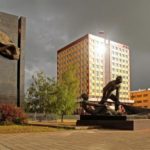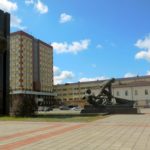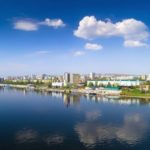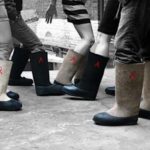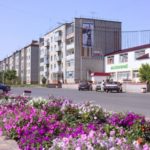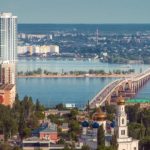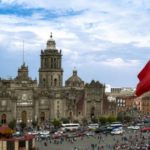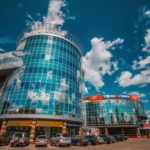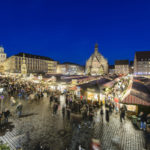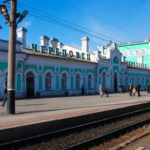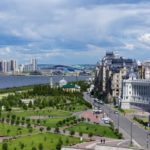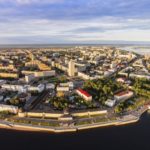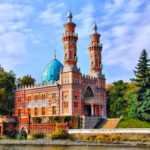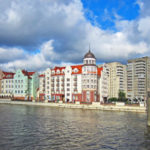The city of Ivanovo
 The city of Ivanovo entered the history of Russia as a city of brides, and the question why – the answer is very simple – because of the production of calico and a large number of young girls working in weaving mills. Historically, until the 18th century, in the city and its districts, there was a massive processing of flax. This craft turned out to be a very profitable and profitable business, which local industrialists took advantage of. So Ivanovo became the city of brides.
The city of Ivanovo entered the history of Russia as a city of brides, and the question why – the answer is very simple – because of the production of calico and a large number of young girls working in weaving mills. Historically, until the 18th century, in the city and its districts, there was a massive processing of flax. This craft turned out to be a very profitable and profitable business, which local industrialists took advantage of. So Ivanovo became the city of brides.
History of the City of Brides
In 1742, in the future city of brides, the first manufactory appeared. Its founder is considered the peasant “capitalist” – Grigory Butrimov. Much later, several special finishing manufactories were opened, where works on dyeing and stuffing fabrics were carried out.
The exact date of the founding of Ivanovo itself – then still, the village is not known for certain. In some historical sources this city was first mentioned in 1561. In the first half of the 19th century, Ivanovo received the status of the largest industrial facility in Russia. The golden age of the calico industry and the prosperity of the most famous dynasties of the “calico kingdom” falls on the period of the country’s restoration after the war with Napoleon.
The reason for this flourishing of this craft was the almost complete absence of competitors. Almost all large Moscow manufactories were burned or needed long-term restoration. By the end of the 19th century, much of the cotton products were produced here. Ivanovo manufactory was often compared to English, famous in those days for its exquisite textiles. At the same time, the city and its unofficial name – the city of Brides.
Ivanovo long belonged to Earls Sheremetyev, bringing fabulous incomes. From time to time, overproduction crises have also occurred, leading to inability to pay wages to workers. The enterprising peasants sought to redeem themselves and their families and settle nearby, on free lands. Gradually formed large settlements, which were then merged into Voznesensky Posad. Here appeared its own council and duma. In 1871, the town was named Ivanovo-Voznesensk. It was here in 1905 that the Council of Workers’ Deputies was formed, becoming a special model of the political structure of the future of the USSR.
The famous museum of Ivanovo Calico provides an opportunity to see the unique exhibition “Ivanovo Textiles. History and modernity. ”Weaving in Russia took its origin from local materials – flax, wool. It is worth paying attention to the huge linen bush, special tools for processing these materials and hand loom presented to the attention of visitors. In one of the halls of the museum, you can personally follow all the processes of processing fabrics, bringing them to the exquisite presentation. This is the secret of the work of manufactory of the past. Interestingly, it was only in the 17th century that homespun linen canvases began to be colored and applied in various patterns.
Then it was a difficult, painstaking manual labor. For this purpose, used wooden plank- “manners”. In order for the paint to be evenly distributed over the finished fabric background, they were hit on these planks with a special hammer-mallet. By this method of drawing the fabric, the fabric is called “printed”. Printed work was carried out mainly by men. This is explained not only by the requirements of the use of force during strikes, but also by the number of meters of fabric that was required to “fill”. Throughout tens of meters of numerous fabric skeins, the design should have the same color intensity. The female part of the work was to thoroughly rinse and dry the canvases. Nevertheless, hardworking girls, young women, potential brides, worked much more in manufactories and garment factories. This is probably why Ivanovo began to magnify the city of brides.
Despite the great industrial growth, for a long time Ivanovo chintz were considered products of low quality. They were designed primarily for consumer demand of the peasantry.
Thanks to maintaining an active, competent marketing policy, Ivanovo fabrics were readily acquired in Central Asia and Persia. Over time, specially for these countries began to develop special drawings corresponding to the unshakable traditions of the East. Later, such an “oriental textile” gained popularity in the Russian market. The most characteristic decorative element of Ivanovo fabrics is the “Persian cucumber”. Traditional images with beautiful floral and geometric ornaments.
The museum exhibition, reflecting the period of the industrial revolution of Russia, provides us with a machine for printing a picture using a special shaft. These shafts are real works of art, allowing you to create artistic masterpieces on the fabric. View the famous Ivanovo weaving machines. Many modern manufacturers of woven products claim that they are in many ways superior to the newly-made technique.
Suddenly cotton is replaced by flax. Appear “calico alchemists” – masters who were engaged in the manufacture of paints. This work has long been secret, secretive. The painting of fabrics was carried out in a special secret room, which had no windows. Work in these conditions was considered the most harmful to health.
The second floor of the museum is occupied by the masterpieces of the famous Russian couturier V. Zaitsev. Being a native of Ivanov, he immediately began his career. In 2007, the exposition “Slava Zaitsev. Life and art”. Admire the interchangeable collections of clothing of the current season and artistic canvases of the artist Zaitsev presented in the halls.
In recent Soviet times, precisely inexpensive Ivanovo textile products had an incredibly wide popularity among various segments of the population. You must admit that a large selection of inexpensive fabrics with bright and cheerful colors bring good memories to someone about the carefree time of childhood, someone about the years of irretrievable youth.
